John Brookes*
‘Constructing nationalism: telling us how it is on Anzac’, Honest History, 15 March 2015
Nationalism is a politically constructed discourse intended to delineate and reveal a community to itself. The rise of Anzac in Australia in the last quarter-century – including its overblown version, what Honest History has called ‘Anzackery’ – has been a product of nationalism.
Discourse
‘Discourse’ refers to the ways we think and communicate about people, things, the social organisation of society and the relationships between all three (Foucault). Clare O’Farrell (2007) summarises Foucault’s ‘discourse’ succinctly as referring to ‘the material verbal traces left by history’. The term describes how a systematic, coherent set of images, metaphors and symbols construct an ‘object’ in a particular way. This object may be the state, government, society or the economy, for example.
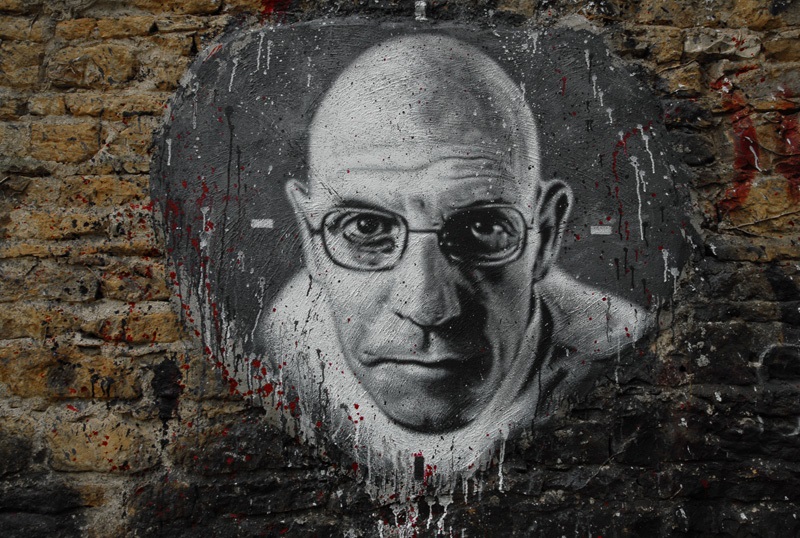 Mural de Michel Foucault (Wikimedia Commons/Thierry Ehrmann)
Mural de Michel Foucault (Wikimedia Commons/Thierry Ehrmann)
Wittgenstein put it well: ‘The picture is a model of reality’ (in Bogan: 20). As discursive analyses aim to ‘[uncover] the strategies and techniques that people employ in building accounts and managing interactions’ (Burr: 162), they focus on how the model of reality is constituted and how it becomes accepted as the authoritative representation of reality.
To do this, discursive analyses invert their subject of inquiry. For example, rather than studying discourse as the product of social institutions, like the state, a discursive approach studies the body of ‘knowledge’ that produces social institutions. As a way to illustrate this inversion, one might ask ‘does culture produce music or does music produce culture?’ According to Weedon, discourse represents ‘ways of constituting knowledge, together with the social practices, forms of subjectivity and power relations which inhere in such knowledges and relations between them (108)’. The ability of discourse to shape our thoughts, ideas, beliefs, values, identities, and interactions with others, as well as our own behavior, makes discourse a productive force that lies at the base of what motivates us and others. Thus, discourse analysis demands that we take nothing in our cultural, political or social orbit for granted, we take nothing as ‘natural’.
Discourse, in an important sense, makes us what we are; throughout human history many different discourses have been dominant. Under the Roman Empire people were pressed to identify as imperial subjects rather than national ones. Other empires, the Holy Roman Empire, the Babylonian and Ancient Chinese Empires have had similar discourses at their roots. Nationalism is no different. (As an aside on the antiquity of nations, most scholars agree that the concept of ‘national’ is of modern coinage, since the Industrial Revolution.) As a discourse, nationalism is:
a way of speaking that shapes our consciousness …, [a method of] thinking about social solidarity, collective identity, and related questions (like political legitimacy) to play a crucial role both in the production of nationalist self-understandings and the recognition of nationalist claims by others (Calhoun: 3-4).
That is, nationalism is an idea. So how has it become accepted as the authoritative representation of reality? Enter the concept of constructivism: Ernest Gellner, a prominent constructivist, famously stated ‘nationalism is not the awakening of nations to self-consciousness: it invents nations where they do not exist’ (7).
Benedict Anderson (1991), who took Gellner’s ideas a step further, demonstrated concrete ways by which the nation is constructed. He argued that national monuments, maps, the census and national holidays and the like are all mobilised to construct the nation as an ‘imagined community’. He did not mean imagined as in ‘false’ but as in ‘constructed’ or ‘produced as an image in the mind’. (Indeed, idealist conceptions of nationalism, such as Hall’s mentioned below, argue that it is primarily in the mind that the national community exists.)
These ‘objects’ act as a focal point of the nation’s attention and become tangible representations of the nation, where national sentiment can be expressed and celebrated. Indeed, it is material expressions of nationalism that are most enduring – and most powerful. This is no different to the concrete representations of discourses past. Consider ancient Egypt, where the Sphinx continues to project the Pharaoh’s majesty and capture public imagination, much like war memorials across the globe do today.
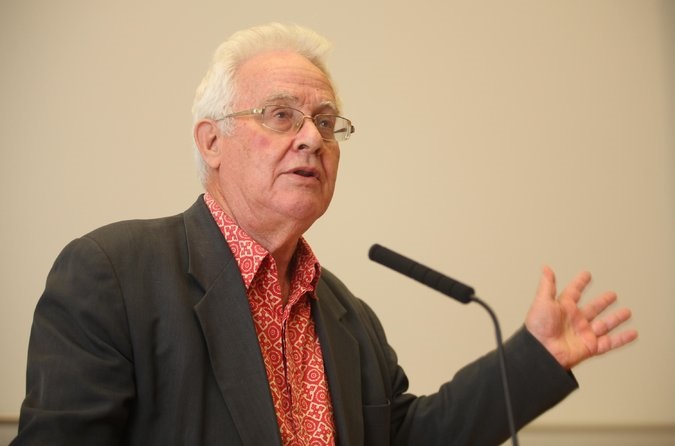 Benedict Anderson (died December 2015), Ireland 2012 (New York Times)
Benedict Anderson (died December 2015), Ireland 2012 (New York Times)
For Anderson a nation is necessarily imagined because the nation’s large size makes it impossible for individual members to know each other. Thus, national monuments and rituals, for example, all contribute to the way individuals imagine their communion across significant barriers like time and space (Anderson: 6-7). Indeed, to use the United States as an example, there is little to connect an individual in New York and one in Seattle, yet, by commemorating Independence Day, by making the same pilgrimages to the Liberty Bell in Philadelphia and by singing the same national anthem, individuals can transcend the dimensions that divide them. Thus, they imagine their unity with other members of the national community in the past, present and future.
While Australia lacks exact analogies to the ‘markers’ mentioned above – Australia Day is not the same as the Fourth of July, we have nothing as significant in ‘winning our independence’ as the cracked bell in Philadelphia – Anderson’s general point applies here and to other countries. Billig has demonstrated how ‘banal’ symbols, such as those un-noticed images on our currency, also construct the national community day-to-day by continuously ‘flagging’ the nation’s existence (Billig: 20). The pictures of flora and fauna and of Banjo Paterson on the five dollar note flag the imagined national community and remind us of the specific images that accompany it: the bush, the early pioneering romance of the Man from Snowy River that we all supposedly inherit; lines from the poem appear on the note.
Our one hundred dollar note deals with the Anzac myth explicitly: on one side, the face of Sir John Monash is superimposed over images of Lighthorsemen and of soldiers operating a cannon; on the reverse side, there is Dame Nellie Melba who, in recognition for her fundraising for war charities during World War I, became Dame Commander of the Order of the British Empire in March 1918. This information is not provided explicitly (and both notables did other things) but the images reinforce the idea that the nation had its roots in Anzac.
If you doubt the power of images, consider Europe’s grand cathedrals and churches, which are covered with images of Biblical tales. The church interior and exterior here are designed to buttress concepts of membership in a religious community by communicating certain information to the illiterate through symbolism. (It makes sense to consider cathedrals straight after a reference to Anzac, given the suggestion that Anzac is Australia’s ‘secular religion’.) The supposed banality of images on currency – or elsewhere – allows their power to reinforce the national model of reality and for this to be transported unseen across the country, across counters, from hand to hand, from wallet to pocket.
Operating in a largely un-noticed symbolic world ensures that, regardless of one’s location, individuals are subconsciously reminded of the imagined community – they ‘imagine’ the community, they develop and retain an image of it – and the nation remains in close proximity. Hence, national symbols, ceremonial days and even maps can make the imagined community appear pervasive, palpable and, most importantly, make it a motivating factor in an individual’s behavior.
Indeed, nation-builders themselves have expressed this understanding of ‘constructivism’, like that just described. In 1861 Massimo d’Azeglio, a pioneer of Italian unification, stated ‘we have made Italy; now we must make Italians’ (quoted in Killinger: 1). (One can imagine some Australian politicians saying similar things between January 1901 and April 1915; they certainly said it after the latter date.) National celebrations, anthems, banal symbols and other associated trappings all combine to create a body of knowledge about the specific group. Expressed simply, discourse creates the nation by creating a national frame of reference.
This accumulated ‘knowledge’ is also relevant, however, to perspectives of the wider world. When nation-builders erect memorials they not only establish specific local knowledge based on information relevant to the national community, they also create connections to a supra-ideology that sustains the legitimacy of nationalism as a global ideological structure. Australia is not the only country that heads its war memorials ‘Pro patria’ (‘For country’ or ‘For nation’).
 James Valentine (ABC)
James Valentine (ABC)
Dealing firstly with ‘local knowledge’, national monuments, national days of commemoration and the images on currency construct a specific body of knowledge that tells a community what its past is, how that affects who it is in the present and how that should dictate its future actions. In other words, they delimit and demonstrate the community to itself. The word ‘tells’ is important, as the ABC presenter James Valentine perceptively noted in 2015 in relation to Anzac commemoration, an important expression of modern Australian nationalism.
I’m being told repeatedly what I should feel. Exactly how solemn I should be, which parts of the story I should mark and what lesson I should draw from them, how our nation was forged on these distant sands, what it meant for us all back home and on and again and over and again (Valentine).
This knowledge ‘informs’ individuals of important notions: individuals are part of a community called a nation. This is so because, for example, the individuals or their parents were born within the nation’s confines. Due to their membership in this community, individuals are expected to act in a certain way and remember, for example, when the nation came into being and how one should commemorate those who ‘fell’ in the nation’s name.
Tony Abbott, when prime minister, spelled out this inherited legacy and the responsibilities it engenders.
Today, all of us who have not been tested in war salute all of those who have … Because they rose to their challenges, we believe that it’s a little easier for us to rise to ours. Their example, we believe, helps us to be better than we would otherwise be. That’s why we’re here: to acknowledge what they have done for us – and what they still do for us …
Yes, they are us; and when we strive enough for the right things, we can be more like them. So much has changed in one hundred years but not the things that really matter. Duty, selflessness, moral courage: always these remain the mark of a decent human being. They did their duty; now, let us do ours. They gave us an example; now, let us be worthy of it. They were as good as they could be in their time; now, let us be as good as we can be in ours (Abbott).
In phrases like ‘Yes, they are us’, nationalism is used to transcend time and influence contemporary conceptions of belonging. Furthermore, Abbott describes service as requiring reciprocal action by those who come later: ‘They did their duty; now, let us do ours’. This is a form of discursive inheritance. Similar remarks about duty are made for the benefit of soldiers – and may be thought to be appropriate in that context – but this is different, this is directed at everyone in the nation. ‘Australians, dead and living’, says historian Frank Bongiorno of this speech, ‘belong to a single community of believers, a nation reconceived as an Anzac Communion of Saints’ (Bongiorno). Stuart Hall shows how a body of knowledge can be specific to a group of people.
We only know what it is to be English because of the way “Englishness” has come to be represented, as a set of meanings, by English national culture … A nation is not only a political entity but something which produces meanings – a system of cultural representation … People … participate in the idea of the nation as represented in its national culture. A nation is a symbolic community (Hall in Finlayson: 108).
The ability to create particular information about a group of people is the first edge of nationalism’s sword. The second edge is, as Gellner reminds us, that nationalism is ‘primarily a political principle that holds that the political and the national unit should be congruent’ (1). Indeed, nationalism no longer speaks to the few: it has become a world-wide political principle, with the effect of making the division of space into autonomous political units seem natural and even worth dying for (Billig: 20). At this point it must be added that nationalism is not necessarily coterminous with boundaries. The Kurds in Turkey, for example, continue to agitate for their national sovereignty yet still remain within the boundaries of the Turkish state. The practice of nationalism is indeed complicated and, in many cases, extremely bloody.
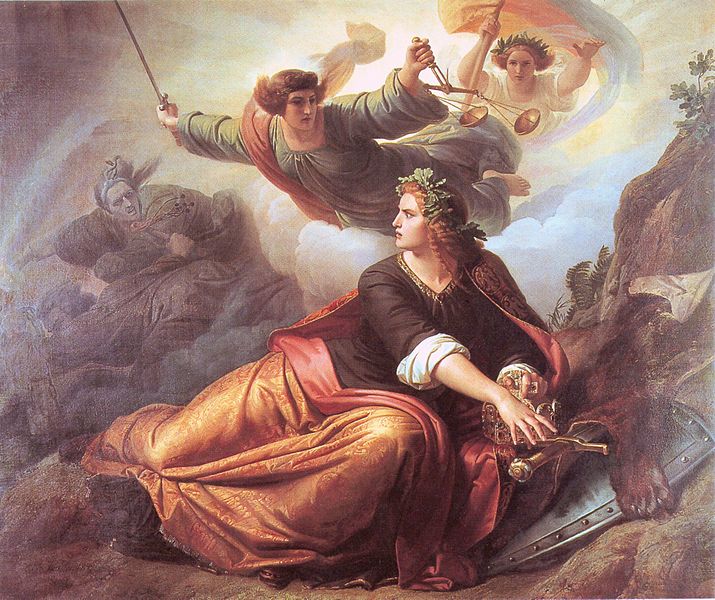 Erwachende Germania (Germany waking), Christian Kohler (Wikimedia Commons/New York Historical Society)
Erwachende Germania (Germany waking), Christian Kohler (Wikimedia Commons/New York Historical Society)
To recap, nationalism as a political principle contains two core elements: the universal and the specific. The former not only concerns the universal characteristics of a nation, such as bounded territory, but also argues that this is the correct way to organise the world’s peoples. Nationalism carries information about the people, culture and society ‘it claims to be for and about. Nationalisms propagate a certain doctrine about the natural division of people and about the rights to self-determination of a particular people (Finlayson: 108).’
Hence, nationalism is more than just an identity for specific nationals; it is a way of thinking in which nations, national identities and national homelands appear as ‘natural’ (Billig: 11). This sort of thinking, in turn, legitimises things like passports and border controls; discourse becomes a powerful actor when it is imagined as ‘legitimate’. The capacity of humankind to manifest its imagination is what makes us such a singular species and what alone should put us on guard. As Mark Twain said, ‘Wherever you find yourself on the side of the majority, it is time to pause and reflect’.
Memory and forgetting
Central to the construction of any national knowledge is the interplay between memory and forgetting. When nations erect national monuments to commemorate and remember national days, they are simultaneously involved in a process of forgetting. Let us take Australia Day as an example. On this day settler Australians celebrate the landing of the First Fleet; the seeds are sown and nurtured of the narrative that on this day Australia was born. If it were not for advocacy by Indigenous Australians (and later, non-Indigenous Australians) it would largely go unmentioned that the history of the Australian nation is interlinked with dispossession and is labelled Invasion Day by many (Korff). Here we have a case of the selective memory involved in national narratives and a discourse that demands not to be forgotten.
Nation-builders create national history by selecting the things and events that will be remembered. For the imagined community to survive, it must tie people across geographical space and through time. By selecting stories from the past to construct narratives, the likes of Abbott and d’Azeglio can link people in the present with people in the past. This is where forgetting becomes as important as remembering. As the famous French philosopher and historian Ernest Renan claimed, forgetting is ‘a crucial element in the creation of nations’ (11). A nation’s discourse about itself relies on collective amnesia because certain parts of the community’s past must necessarily be forgotten to maintain a discourse’s coherence. If a nation’s discourse rests on the narrative that the roots of their community are egalitarian, the massacres of the original inhabitants is politically inconvenient, if it is remembered at all.
Furthermore, amnesia allows failures or mistakes to be re-narrated as great glories. It is worth noting of the Gallipoli campaign that the annual celebrations often say little about the actual strategic goals of the overall campaign, or that Australians were under British, rather than Australian command. (As a New Zealand friend once said, this was not a great indicator of the self-determination and national self-assuredness that Anzac supposedly bequeathed to later generations.) Nationalism’s amnesia means that we fudge the reality of two events, two invasions: the official narrative ‘forgets’ that the arrival of the First Fleet in 1788 meant the dispossession of Indigenous Australians; the 1915 Gallipoli adventure is recognised as a ‘glorious failure’ but we balk at describing it correctly as an invasion.
 Fundraising badge 1919 (AWM REL 39126/Atkinson & Co, Adelaide)
Fundraising badge 1919 (AWM REL 39126/Atkinson & Co, Adelaide)
The dialectic – the formative tension – between memory and forgetting (Billig: 38) goes part of the way to produce the nation, its discourse and the stories that demonstrate the national community to itself: as a nation ritually celebrates its glories, it falls silent about its failures, which become forgotten. Thus, it is important to understand nationalism as a constructed discourse that at any one time draws heavily on the past while simultaneously forgetting it.
Nationalism from where?
By understanding nationalism as an exercise in discourse construction, we come closer to exploring how a nation and its identity are produced and maintained. Yet, despite the concrete expression of discourse in memorials and the like, a nation’s discourse is never set in stone. For example, the instability of economic, social and cultural life can challenge the narrative that stone and concrete memorials attempt to immortalise. What constitutes ‘knowledge’ is forever in flux.
Indeed, this fluidity is a necessity for the community’s survival, as rigid discourses will likely lose their appeal when they no longer correspond to their context (Edensor: 5). An excellent example of this is the Neue Wache (literally ‘The New Guardhouse’), formerly a guard house in central Berlin, which, in the course of a century, came to represent different discursive approaches to commemoration as it was first used by the Prussians, then by the elites of the Weimar Republic, then by the Nazi Party, then by the German Democratic Republic and, finally, by the Federal Republic of Germany. Although the structure has not moved, it was used by each regime to reconstruct a discourse of the past to validate the ideological dominance of those in power (Zbigniew). Similar, if not the same, community of people, different knowledges.
Zbigniew presents a ‘top-down’ analysis of nationalism, where the substantive content of a discourse is constructed and reconstructed by those ‘at the top’ and consumed and reproduced by those ‘at the bottom’. The state, governmental organisations or moneyed elites are in a position of power to select the stories they prefer and they simultaneously possess the resources and are given the authority (by us) to construct the monuments and buildings, or issue currency to reinforce their model of reality. In this sense, nationalism resembles EH Carr’s famous quote about history.
The facts … are like fish swimming about in a vast and sometimes inaccessible ocean; and what the historian catches will depend, partly on chance, but mainly on what part of the ocean he chooses to fish in and what tackle he chooses to use – these two factors being, of course, determined by the kind of fish he wants to catch. By and large, the historian will get the kind of facts he wants. History means interpretation (23).
Constructing national history is an exercise in discourse construction, by which certain facts are selected and interpreted (and reinterpreted in time) to create a discursive community. The top-down approach described by Zbigniew is common in the analysis of nationalism and nation-building. For example, Greenfeld’s analysis of England, France, Russia, Germany and the United States highlights the new aristocracy or the intellectual elites as the ‘carriers’ of nationalism, depending on the case (Greenfeld). Gellner considers national discourse to be macro-generated, such as through state education. Marilyn Lake (2010), in the seminal What’s Wrong with Anzac? takes a similar line. Elizabeth Schmidt, who wrote on the analysis of nationalism, describes how this approach treated the study of the national independence movement of Guinea.
While many of these works note that nationalist leaders focused on local grievances and manipulated indigenous symbols and traditions to appeal to mass audiences, most perpetuate the top-down perspective of their predecessors. According to this view, the masses were but recipients of the nationalist message. They were mobilized by the elites; they were not a mobilizing force (980).
Focussing exclusively on the top, however, loses sight of the actors who actually constitute the national body, the national subjects. The top-down perspective disempowers national subjects by presenting them as mere consumers of discourse and contradicts much social research which stipulates that ‘social actors are not merely reproducing a well‐learned role, but always act as co-authors of social scripts’ (Glaveanu: 10).
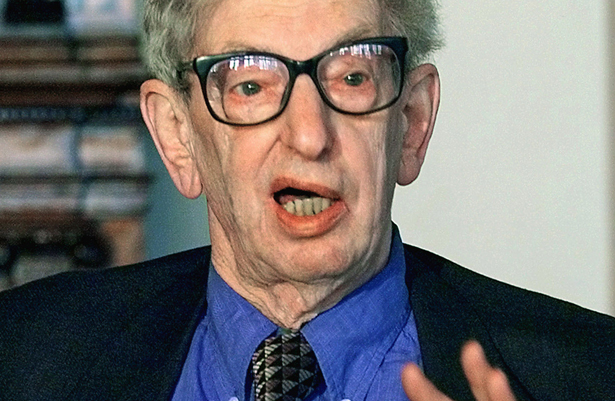 Eric Hobsbawm (died 2012) (The Nation)
Eric Hobsbawm (died 2012) (The Nation)
Focussing too sharply on top-down obscures the people who actually make up the nation – us. The renowned historian, Eric Hobsbawm, wrote of this oversight, calling specifically for greater research into nationalism as viewed from below (11). Indeed, if nationalism is a motivating factor – that is, if nationalism makes people do things – national subjects and their actions are due far more attention. Cohen has written on what he calls ‘personal nationalism’, where he acknowledges that ‘studies neglect the personal dimensions of nationalism, and, by thus understating the agency of the self in the construction of the nation, they risk misunderstanding nationalism itself’ (804).
We know that national subjects (people), are capable of constructing their own discourses, yet relatively little research has been done to highlight how this happens. In Australia, we lack even basic public opinion polling data about what people think about the Anzac legend and how the nation handles it. From when polling began in the early 1940s until 1990, for example, there were questions about opening pubs and having horse races on Anzac Day but not on more fundamental questions about Anzac (Goot).
Australia – any country – needs this research because of the cyclical nature of all discourses and the individual’s role within them. For any discursive project to be sustainable, it is not good enough for those ‘at the top’ to write a narrative; it must also be taken up by those ‘below’. Moreover, the body of knowledge on nationalism and the nation it produces are mutually reinforcing. Billig captures this dynamic well when he states ‘national identities are forms of social life’ and ‘ideological creations, caught up in the historical process of nationhood’ (24). Fairclough and Wodak say that discourse is ‘constitutive both in the sense that it helps to sustain and reproduce the social status quo, and in the sense that it contributes to transforming it’ (258).
So we are left with ‘the top’ feeding, as it were, a discourse to ‘the bottom’, who then respond by putting pressure, framed by the discourse, back on ‘the top’. It makes the discourse self-sustainable while this dynamic is maintained. Referring to Anzac commemoration activities – part of the maintenance of Australia’s discourse – a senior Australian government official stated ‘It’s what the bogans want’.
However, how much is it ‘the bogans’ and how much the officials who have given us what James Brown (ABC TV) called ‘a four-year festival for the dead which in some cases looks like a military Halloween’? Do individual Australians have ‘a naturally bowed head’ on Anzac Day because they feel it is the right thing to do or just because everyone else is doing it? Is it ‘us’ or ‘them’ that keeps the nationalist mill churning? Can we blame the National Australia Day Council for the form of the modern Australia Day or is the answer closer to home? Do we respond to a carnival of snags and backyard cricket and flag-waving because that is what we are or because we have been told that is what we are? Some of us, all of us? Our lack of understanding of the individual is a democratic deficit in the study of nationalism.
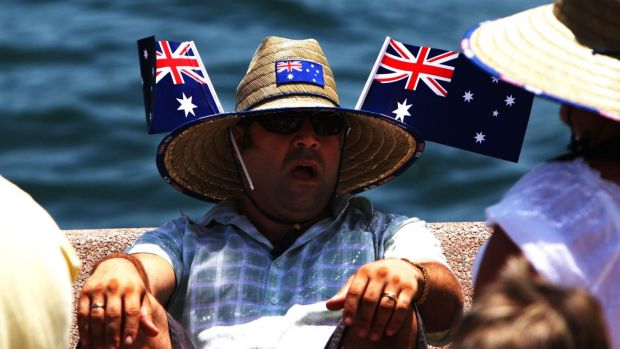 Australia Day 2016 (Brisbane Times)
Australia Day 2016 (Brisbane Times)
* John Brookes is a Victorian-based writer and teacher. He has a Bachelor of Arts and Bachelor of International Relations from the Australian National University, where he wrote his thesis in German on the German-Israeli relationship. He also has an MSc in Nationalism Studies from the University of Edinburgh.
Bibliography
ABBOTT, T. (2015) ‘2015 Dawn Service, Gallipoli’, Department of the Prime Minister and Cabinet, PM Transcripts: Transcripts from the Prime Ministers of Australia, https://pmtranscripts.dpmc.gov.au/release/transcript-24397, accessed 30 January 2016
ABC Television (2014) ‘Have Anzac celebrations become “a military Halloween”?’, 7.30, 13 February 2014, https://www.abc.net.au/7.30/content/2013/s3944397.htm, accessed 27 February 2016
ANDERSON, B. (1991). Imagined Communities: Reflections on the Origin and Spread of Nationalism. London: Verso
BILLIG, M. (1995). Banal Nationalism. London: Sage Publications
BONGIORNO, F. (2016). Personal communication
BOGAN, J. (1972) Wittgenstein’s Philosophy of Language: Some Aspects of its Development. Oxford: Routledge
BURR, V. (2003) Social Constructionism. Oxford: Routledge
CALHOUN, C. (1997) Nationalism. Buckingham: Open University Press
CARR, EH (2008) What is History? New York: Penguin Books
COHEN, A. (1996) ‘Personal nationalism: a Scottish view of some rites, rights, and wrongs’, American Ethnologist, 23 (4), 802-15
EDENSOR, T. (2002) National Identity, Popular Culture and Everyday Life. Oxford: Oxford International Publishers
FAIRCLOUGH NL & WODAK, R. (1997). ‘Critical discourse analysis’ in TA van Dijk (ed.), Discourse Studies: A Multidisciplinary Introduction, Vol. 2: Discourse as Social Interaction (pp. 258-84). London: Sage
FINLAYSON, A. (1998) ‘Ideology, discourse and nationalism’, Journal of Political Ideologies, 3(1), 99-118
FOUCAULT, M. (1976) The History of Sexuality: Volume 1: The Will to Knowledge. New York: Vintage Books
GELLNER, E. (1983) Nations and Nationalism. Ithaca: Cornell University Press
GLAVEANU, V. (2009) ‘What differences make a difference? a discussion of hegemony, resistance and representation’, Papers on Social Representation, 18 (2)
GOOT, M (1993) Australian Opinion Polls 1941-1990: An Index. Melbourne: DW Thorpe in association with the National Centre for Australian Studies
GREENFELD, Liah (1992) Five Roads to Modernity. Cambridge MA: Harvard University Press
HOBSBAWM, E. (1990) Nations and Nationalism since 1780. Cambridge: United Press
KILLINGER, C. (2002) The History of Italy. Greenwood Press: Westport
KORFF, J. (2016) ‘Australia Day Invasion Day’, Creative Spirits, https://www.creativespirits.info/aboriginalculture/history/australia-day-invasion-day, accessed 30 January 2016
LAKE, M. et al (2010) What’s Wrong with Anzac? Sydney: NewSouth
O’FARRELL, C. (2007) Michel-Foucault.com, https://www.michel-foucault.com/, accessed 27 February 2016
RENAN, E. (1990) ‘What is a nation?’ in Bhabha, HK (Ed.) Nation and Narration. London: Routledge
SCHMIDT, E. (2005) ‘Top Down or Bottom Up? Nationalist Mobilization Reconsidered, with Special Reference to Guinea (French West Africa)’, American Historical Review, 110 (4): 975-1014.
VALENTINE, J. (2015) ‘Gallipoli: the story we all grew up with’, Age 21 April 2015, https://www.theage.com.au/comment/gallipoli-the-story-we-all-grew-up-with-20150421-1mpsew , accessed 30 January 2016
WEEDON, C. (1987) Feminist Practice and Post-structuralist Theory. Oxford: Basil Blackwell
WILLIAMS, JF (1999) Anzacs, the Media and the Great War. Sydney: UNSW Press
ZBIGNIEW, M. (2011) ‘Neue Wache (1818-1993)’, Przegląd Zachodni (Polish Western Affairs), 1, https://www.iz.poznan.pl/pz/news/9_03.%20Mazur.pdf, accessed 30 January 2016


Leave a Reply
You must be logged in to post a comment.